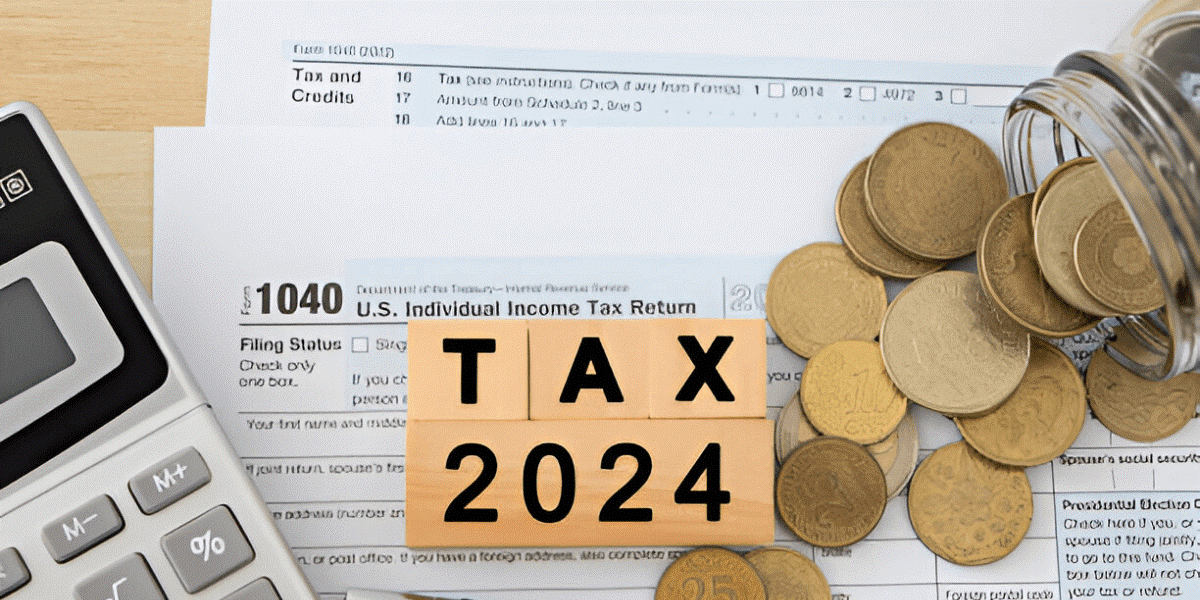Tips To Maximise Small Business EOFY Tax Deductions
When the end of the financial year approaches, small businesses in Australia are presented with a valuable opportunity to optimise their tax deductions. Maximising these deductions not only helps in reducing tax liability but also plays a crucial role in enhancing overall financial outcomes for small business owners.
In this blog, we will delve into practical and actionable tips tailored for Australian small business owners who seek to make the most of their end-of-financial-year tax deductions. Drawing advice and insights from industry experts and successful small business owners, we aim to provide strategies that can be easily implemented. Our focus will be on empowering small business owners with the knowledge and tools to navigate the complexities of tax deductions effectively.
Throughout the blog, we will break down complex financial concepts into simple, easy-to-understand language, ensuring that all our readers - regardless of their financial expertise - can grasp the information provided. From exploring key deductible expenses to outlining strategic planning approaches, this blog aims to equip small business owners with the information they need to optimise their tax deductions successfully.

Getting The Business Structure Right
Choosing the right business structure is crucial for maximising tax deductions and optimising tax efficiency for small businesses in Australia. The business structure not only impacts how the business is legally organised but also has significant implications on tax obligations. Understanding the different business structures available and their respective tax implications is essential for small business owners to make informed decisions that align with their financial goals.
In Australia, small businesses commonly operate as sole traders, partnerships, companies, or trusts. Each business structure comes with distinct tax implications and benefits:
Sole Trader:
- Tax Implications: As a sole trader, you and your business are considered the same entity for tax purposes. The income generated is taxed at your individual tax rate.
- Benefits: Simplified business structure, easier to set up, and complete control over decision-making.
Partnership:
- Tax Implications: Partnerships involve multiple individuals sharing profits and losses. Each partner pays tax on their share of the partnership income.
- Benefits: Shared financial burden, potential for diverse skills and resources, and flexibility in decision-making.
Company:
- Tax Implications: Companies are separate legal entities responsible for paying taxes on their profits. The company tax rate applies to profits
- Benefits: Limited liability for shareholders, potential tax benefits through deductions, and ability to retain profits within the company.
Trust:
- Tax Implications: Trusts distribute income to beneficiaries, who are then taxed on that income. The trustee is responsible for managing and distributing trust income.
- Benefits: Flexibility in income distribution, asset protection, potential tax advantages, and succession planning benefits.
To select the most tax-efficient structure for a small business, consider the following practical advice:
- Consult with a professional accountant or tax advisor to assess your business needs and financial goals.
- Evaluate the level of personal liability you are willing to accept.
- Consider the complexity of the business structure and administrative requirements.
- Assess the potential tax advantages and disadvantages of each structure based on your income and expenses.
- Regularly review and adjust your business structure as your business grows and tax laws change.
- By choosing the right business structure tailored to your specific circumstances and tax objectives, small business owners can maximise tax deductions, minimise tax liability, and improve overall financial outcomes.

Taking Advantage Of Tax Breaks And Incentives
As an Australian small business owner, it is essential to be aware of the various tax breaks and incentives available that can help significantly reduce your taxable income. By leveraging these deductions effectively, you can not only lower your tax liability but also improve your financial outcomes.
In this section, we will explore some of the key tax breaks and incentives that small businesses in Australia can take advantage of, along with real-life examples and scenarios to illustrate how these incentives can benefit you.
Research and Development (R&D) Tax Incentive
One of the most significant tax incentives available to Australian businesses is the Research and Development (R&D) Tax Incentive. This incentive aims to encourage companies to invest in innovation by providing a tax offset for eligible R&D activities. Small businesses can claim a 43.5% refundable tax offset for eligible R&D activities, making it a valuable incentive to drive research and development efforts. For example, a small software development company can claim R&D tax credits for the costs incurred in developing new software solutions or improving existing products.
Instant Asset Write-Off
The temporary full expensing rules, which provided an immediate deduction for the full cost of assets acquired from 6 October 2020, ended on 30 June 2023. While the instant asset write-off threshold was due to drop back to $1,000 from 1 July 2023, the Government has introduced a Bill to Parliament which contains amendments to ensure that a $20,000 threshold will apply to small business entities for the 2024 income year.
For a small business entity to access the instant asset write-off threshold of $20,000 the following conditions need to be satisfied:
- The entity must carry on a business under general principles in the 2024 income year;
- It must have aggregated annual turnover of less than $10m;
- This can be based on current year or previous year figures;
- It must choose to apply the simplified depreciation rules for the 2024 income year;
- The asset must have a cost of less than $20,000; and
- The asset must be first used, or installed ready for use, for a taxable purpose between 1 July 2023 and 30 June 2024.
Small Business Income Tax Offset
The Small Business Income Tax Offset is another incentive that can help reduce the tax burden for small business owners. Eligible small businesses with an aggregated turnover of less than $5 million can access a tax offset of up to $1,000 each year. This offset is applied to the tax liability of the business owner and can result in significant tax savings. For example, a small retail business with an aggregated turnover of $5 million can benefit from the Small Business Income Tax Offset to lower its tax payable.
In conclusion, understanding and leveraging tax breaks and incentives can play a crucial role in optimising your small business's financial position. By taking advantage of incentives like the R&D Tax Incentive, instant asset write-off, and Small Business Income Tax Offset, you can effectively reduce your taxable income and improve your overall financial outcomes. It is essential to consult with a tax professional to ensure you are maximising the benefits of these incentives for your small business.
Subsidies
There are many subsidies available for small businesses. Some examples are listed below:
Restart Wage Subsidy- Employers can receive up to $10,000 in government assistant if they hire a full-time job seeker aged 50 or older under Restart wage subsidy program.
Youth bonus wage subsidy – Employers can receive up to $10,000 via youth bonus wage subsidy if they hire a job seeker between 14 and 25 for minimum average of 20 hours per week over six months.
Small Business Energy Incentive – Additional 20% deduction of the cost incurred on depreciable assets that provide energy savings.
Other wage subsidies – Employers can receive up to $6500 if they hire job seekers between 25 to 29 years of age, a job seeker is a principal carer parent and a long-term employed indigenous job seeker registered with employment services for six months.
The Significance Of Keeping Detailed Records
Maintaining accurate and detailed financial records is paramount for small business owners aiming to make the most out of End of Financial Year (EOFY) tax deductions. By keeping meticulous records, businesses can ensure they claim all eligible deductions, reduce tax liability, and avoid potential audit issues.
Importance of Record-Keeping:
Keeping detailed financial records not only facilitates accurate tax reporting but also provides valuable insights into the overall financial health of the business. It enables businesses to track expenses, income, and investments effectively, making it easier to evaluate the company's profitability and financial stability.
Record-Keeping Best Practices:
1. Consistent Documentation: Implement a system to record all financial transactions promptly and consistently.
2. Organised Filing System: Maintain a well-organised filing system for easy access to invoices, receipts, and bank statements.
3. Digital Tools and Software: Utilise accounting software such as Xero, QuickBooks, or MYOB to streamline record-keeping processes.
4. Regular Reconciliation: Reconcile financial records with bank statements on a monthly basis to identify any discrepancies.
5. Backup Data: Ensure regular backups of financial data either on the cloud or physical storage to prevent data loss.
Benefits of Meticulous Records:
1. Maximising Deductions: Accurate financial records allow businesses to identify all eligible deductions, thereby lowering taxable income and maximising tax deductions.
2. Minimising Errors: Detailed records reduce the likelihood of errors in tax reporting, ensuring compliance with tax regulations and minimising the risk of penalties.
3. Audit Preparedness: Maintaining meticulous records makes businesses well-prepared for potential audits, providing evidence to support tax deductions and claims.
The significance of keeping detailed financial records cannot be overstated for small businesses seeking to optimise EOFY tax deductions. By following record-keeping best practices and leveraging digital tools, businesses can streamline the process, improve financial management, and ultimately enhance their tax outcomes.
Strategies For Using Home Office For Tax Deductions
Operating a small business from a home office can offer various tax benefits for business owners. Understanding the tax implications and utilising home office deductions effectively can help maximise tax savings. Below are some strategies and practical tips for small business owners to leverage their home office for tax deductions:
Eligibility Criteria for Claiming Home Office Deductions:
1. Exclusive and Regular Use: To qualify for home office deductions, the designated area within the residence must be used exclusively and regularly for conducting business activities.
2. Principal Place of Business: The home office should be the primary location where core business operations are performed.
3. Meet Clients: If the home office is used to meet clients or customers, it may also be eligible for deductions.
4. Separate Structure: In some cases, business owners using a separate structure on their property for business activities may qualify for home office deductions.
Actionable Strategies for Maximising Home Office Deductions:
1. Calculate Square Footage: Determine the total square footage of the home office space in relation to the total living space to accurately calculate the percentage of home-related expenses that can be claimed.
2. Direct Expenses: Separate direct expenses related to the home office, such as office equipment, furniture, and repairs, for a more precise deduction.
3. Indirect Expenses: Include indirect expenses like mortgage interest, property taxes, utilities, and home insurance by applying the determined percentage of business use.
4. Record-Keeping: Maintain detailed records of expenses and receipts to substantiate deductions in case of an audit.
5. Consultation: Seek advice from a tax professional to ensure compliance with the latest tax laws and regulations for home office deductions. Also, do not forget to ask about potential CGT consequences when you decide to sell the home.
Calculating Home Office Expenses:
1. Simplified Method: Business owners can opt for the simplified method of deduction, which involves multiplying the square footage of the home office by a prescribed rate set by the ATO.
2. Actual Expense Method: Alternatively, business owners can choose to itemize actual expenses incurred for operating the home office, providing potentially higher deductions but requiring more comprehensive record-keeping.
Avoiding Common Pitfalls:
1. Personal Use: Avoid using the home office space for personal activities to maintain the exclusivity requirement for deductions.
2. Overstating Expenses: Ensure expenses claimed are reasonable and directly related to the business to prevent potential audits or penalties.
3. Proper Documentation: Keep accurate records of all expenses, receipts, and documents to substantiate deductions if required.
By understanding the eligibility criteria, implementing effective strategies, and maintaining proper documentation, small business owners can optimise their home office for tax deductions and enhance their overall financial outcomes.
Tips For Managing Capital And Operational Expenses Effectively

Managing both capital and operational expenses is critical for optimising tax deductions and ensuring financial efficiency. By strategically planning expenses, implementing budgeting techniques, and adopting cost-saving measures, small business owners can maximise their tax deductions while staying compliant with tax laws.
Strategic Expense Planning:
1. Identify Priorities: Prioritise expenses that directly contribute to revenue generation or improve business operations.
2. Lease vs. Purchase: Evaluate whether it is more tax-efficient to lease or purchase assets based on tax deduction implications.
3. Timing of Expenses: Strategically time certain expenses to maximise deductions in the current tax year.
Budgeting Techniques:
1. Zero-Based Budgeting: Reevaluate expenses from scratch each budget cycle to ensure all costs are justified and aligned with business goals.
2. Forecasting: Use historical data and market trends to forecast expenses accurately and allocate funds effectively.
3. Contingency Planning: Set aside funds for unexpected expenses to avoid financial strain and maintain tax deductibility.
Cost-Saving Measures:
1. Negotiate Supplier Contracts: Renegotiate contracts with suppliers to secure lower rates and reduce operational costs.
2. Technology Integration: Invest in cost-effective technological solutions to streamline operations and minimise manual errors.
3. Energy Efficiency: Implement energy-saving practices to reduce utility costs and take advantage of tax incentives for eco-friendly initiatives.
Identifying Deductible Expenses:
1. Consult a Tax Professional: Seek advice from a tax professional to accurately categorise expenses and maximise deductible items.
2. Keep Detailed Records: Maintain organised records of all expenses, receipts, and invoices to support tax deductions during audits.
3. Stay Informed: Stay updated on tax laws and regulations to ensure compliance and leverage available deductions effectively.
4. Regular Review: Regularly review expenses to identify areas where deductions can be optimised and adjusted.
By following these expert tips and integrating them into your financial management practices, small business owners can effectively manage their capital and operational expenses to optimise tax deductions and improve overall financial outcomes.
End Note
In conclusion, the blog has provided valuable insights and actionable tips for Australian small business owners to maximise their tax deductions before the end of the financial year. The strategies and advice shared by industry experts and successful business owners offer a practical approach to reduce tax liability and enhance financial outcomes for small businesses.
Early tax planning and tax saving accounting services are a crucial aspect for small businesses to take advantage of EOFY tax deductions effectively. By implementing the discussed tips and strategies, small business owners can optimise their financial position and ensure compliance with tax regulations.
It is imperative for small business owners to proactively manage their tax obligations and seek opportunities to minimise their tax burden. By staying informed, planning ahead, and leveraging available deductions, businesses can make significant savings and improve their overall financial health.
We encourage every small business owner to take action now and start implementing the suggested tax planning strategies. Empower yourself to maximise your EOFY tax deductions, secure your financial future, and take control of your business's tax responsibilities. Your proactive approach to tax planning can lead to long-term financial success and stability.
Disclaimer:
The content of these blog posts is intended to be of a general nature and should not be construed as tax or any other form of advice. We do not guarantee the accuracy or completeness of the information provided in these blog posts. It is imperative that you consult with a qualified professional, such as a certified accountant at Tax App, before taking any action based on the advice or information contained herein. Your specific financial and tax situation may require personalised guidance, and a professional consultation is recommended to ensure compliance with applicable laws and regulations.
Get Started with Us
Connect with Australia’s most innovative accountants today. Fill out our contact form, and let’s discuss how we can help you achieve your financial goals. Together, we’ll create a tailored action plan that maximises your tax savings.
Awards!
⭐⭐⭐⭐⭐






At Tax App, we offer Sydney Local, Online Accounting and Tax Services for individuals and small businesses in our community. Our technology and experienced team provide efficient and personalised solutions to streamline financial management. Trust us to be your partner in success.
Chartered Accountants
Liability limited by a scheme approved under Professional Standards Legislation
All Rights Reserved | Tax App Pty Ltd
Useful Links
Contact Us
Disclaimer: The content of this website is intended to be of a general nature and should not be construed as tax or any other form of advice. We do not guarantee the accuracy or completeness of the information provided in this website. It is imperative that you consult with a qualified professional, such as a certified accountant at Tax App, before taking any action based on the advice or information contained herein. Your specific financial and tax situation may require personalised guidance, and a professional consultation is recommended to ensure compliance with applicable laws and regulations.









